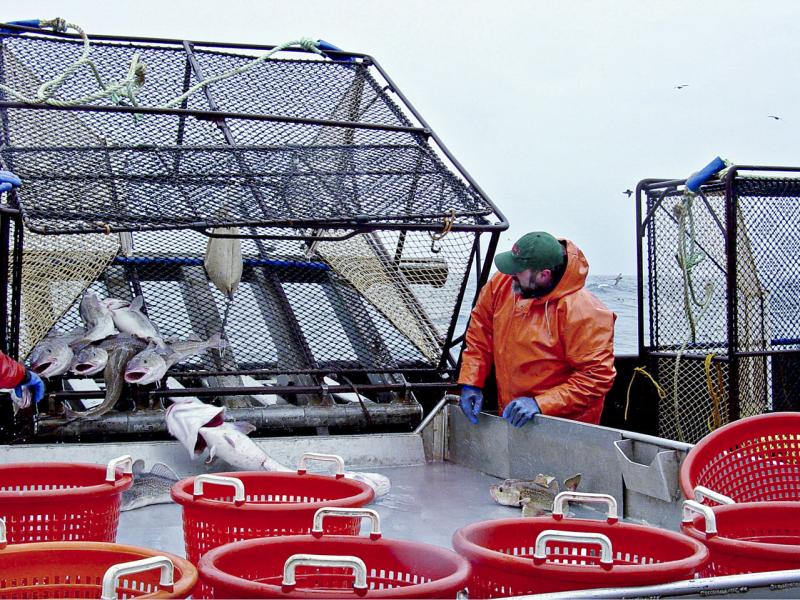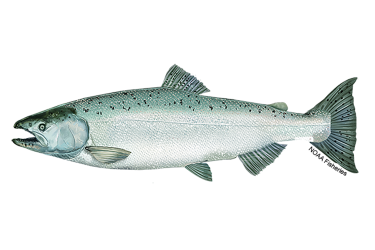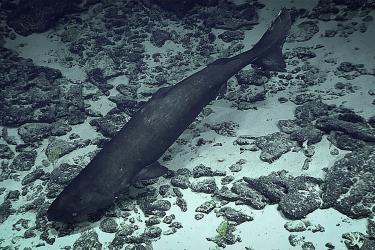Genetics Tell a Story
“So, what happened?” asked Ingrid Spies, the biologist at NOAA’s Alaska Fisheries Science Center who led the study. “We knew there were a few possibilities. It could have been the expansion of a small existing population in the northern sea. It could have been fish moving in from Russia, or from somewhere else in their known range; maybe it was the missing Gulf of Alaska cod whose numbers declined significantly in 2017.”
The answer would have important implications for sustainable fisheries management. If the northern cod turned out to represent a distinct stock, additional protections might be necessary to manage the northern and southern stocks separately. If it was a northward shift of one of the other stocks, it could disrupt fisheries. The northern Bering Sea is currently closed to trawling. If a stock was shifting north, it could limit catch potential for part of the fleet.
The research team also included Dr. Lorenz Hauser and Carolyn Tarpey at the University of Washington. They used a genetics approach to find out whether the northern cod represented a separate population, or the redistribution of southeastern Bering Sea, Gulf of Alaska, or Aleutian Islands stocks. They also relied heavily on pre-existing genetic baselines of spawning stocks of Pacific cod throughout their range that were published in a paper by Dr. Dan Drinan from the University of Washington.
Pacific cod move seasonally between summer feeding and winter spawning grounds. Cod show natal homing and spawning fidelity—they return to the location where they were spawned to spawn. Therefore, the spawning population is considered representative of a population, while summer populations could be mixed.
So Spies’ team compared genetic markers of the northern cod with spawning fish from the other three stocks.
“We found that the northern fish were indistinguishable from the southeastern Bering sea population,” Spies said. “That meant the fish were moving north from their historical southeastern Bering Sea habitat. We could rule out the other possible origins for the fish sampled.”
“It was exciting to be able to use genetics to help answer an important management question. Northern Bering Sea cod were included in the stock assessment for the first time in 2018, and our results fed directly into that decision.”
Spies’ team had found an answer to what happened. The next question was, why?
A Changing Climate
“There is a strong indication that this is a result of changing ocean temperatures,” Spies said. “Specifically, the effect of climate warming on the Bering Sea cold pool.”
The ‘cold pool’ is a body of water below 2 °C that is left on the eastern Bering Sea bottom after sea ice retreats. The cold pool has a strong influence on fish distributions. Walleye pollock, most flatfish, and Pacific cod avoid it.
In recent years of warm temperatures and diminishing sea ice, the cold pool has shrunk. In 2018, for the first time in recorded history, it was virtually absent.
“Until 2017, cod would usually avoid the cold pool – they’d bump into it and go no farther north. Then, in 2018, the cold pool was gone. There was nothing stopping fish from going north.” said, Spies.
That leads to the next question – where are they headed?
“We don’t know if their whole life cycle has shifted northward, or if they will return to their typical southeastern Bering Sea spawning areas for the winter and undertake long feeding migrations north in summer,” said Spies.
“This emphasizes the need for continued northern and southeastern Bering Sea surveys and for tagging studies,” Spies said. ”This is probably not the only species we will see changing. We really need to monitor the northern Bering Sea with surveys every single year until things stabilize”.
Additional Resources








